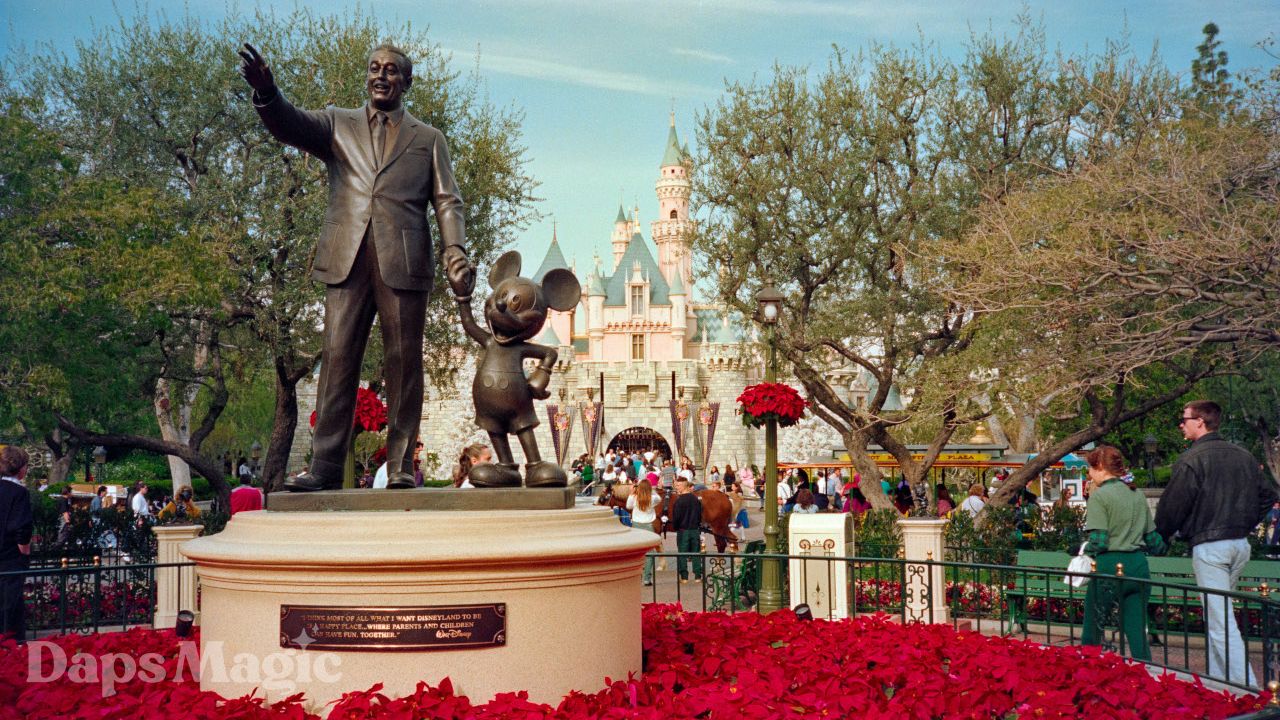Do you remember “The Globe of Death?”
If you do, it will remain only a vivid memory. That is because, thirty years ago this month, Disneyland dedicated the Partners statue at the center of the park, creating a permanent tribute to the man who started it all, and the mouse that he said started it all.
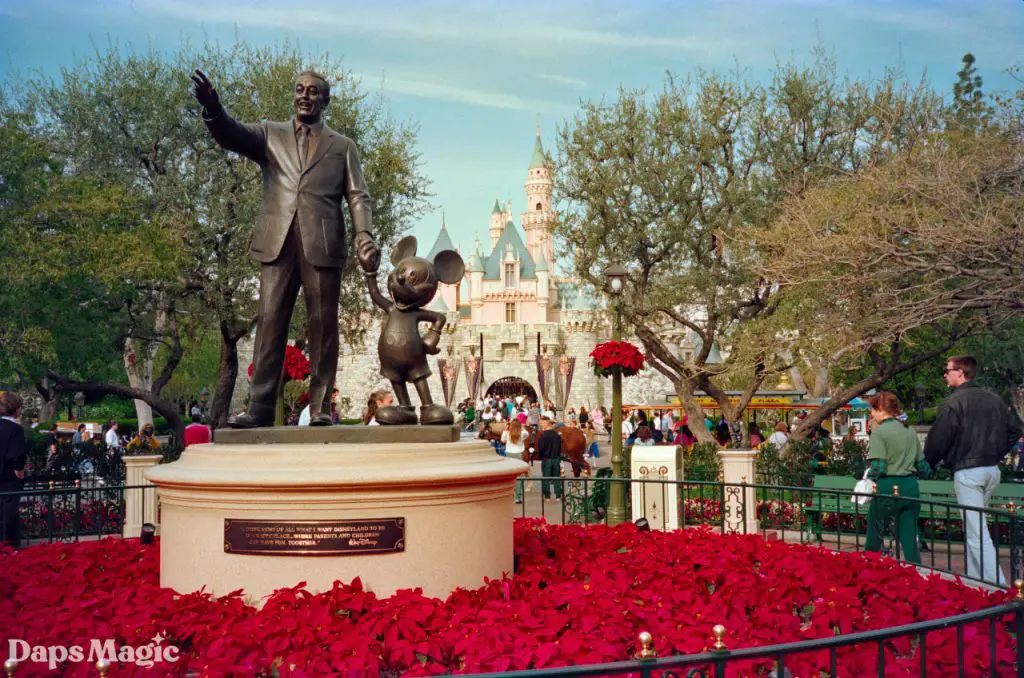
It was dedicated, fittingly, on November 18, exactly 65 years to the day that Mickey Mouse made his public debut in “Steamboat Willie.” The larger than life-sized statue depicted a mature Walt Disney, holding the hand of his most famous creation, Mickey Mouse. Mickey stands, hand on hip, reaching upward to grasp Walt’s hand. Walt’s other arm is extended, as he gestures into the distance, toward his happiest place on earth and its guests, as they entered via Main Street.
The placement of the statue was a source of deliberation, if not to say controversy. There was, first of all, the question of whether it would look too much like a memorial to Walt and Mickey. The choice to depict them in a casual manner, with Walt in mid-gesture mitigated that. There was even consideration at one point to having Mickey holding an ice cream cone in his free hand. (Personally, I would have liked to see Mickey holding a box of popcorn!)
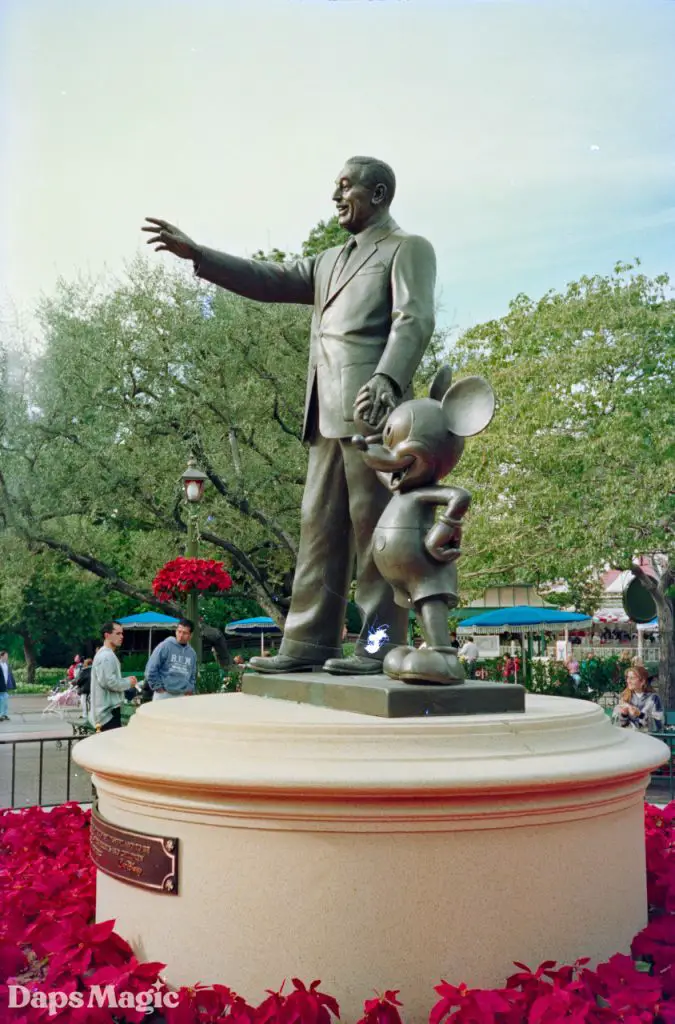
Then there was the question of which way the statue should be situated. Facing the castle seemed an obvious choice. But by placing Walt with the castle behind, he would be facing guests as they streamed down Main Street. Further, the chosen placement created the optimal photo opportunity, with Sleeping Beauty Castle as a stately background for the Partners.
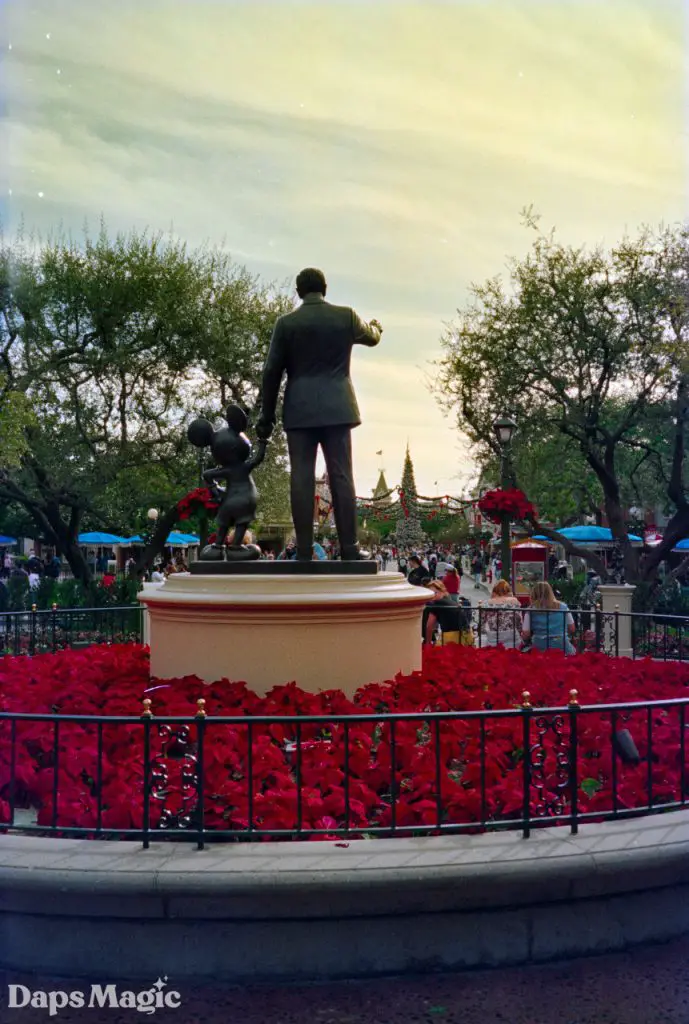
The sculptor of the cast copper piece was Blaine Gibson. This Disney Legend had the benefit of not only knowing both subjects, but of having had experience as an animator and a sculptor. In interviews, Gibson sometimes mentioned a quirky technical aspect of the pair. How does Walt, with five fingers, grasp the hand of Mickey who has only four? This is not a detail that many sculptors have to consider as they are creating monumental works of public art.
In addition to the central figures, a set of plinths with beloved Disney characters encircling the central hub was also revealed. Unlike the full sized sculptures, which were set back into a broad planter, these were easily accessible to visitors.


The new ensemble was an immediate hit with the public. By day or by night, visitors were drawn to it. Selfies and Instagram were unknown terms in 1993. But people flocked to have their photos taken with Walt, Mickey, and the castle, just as they do thirty years later.
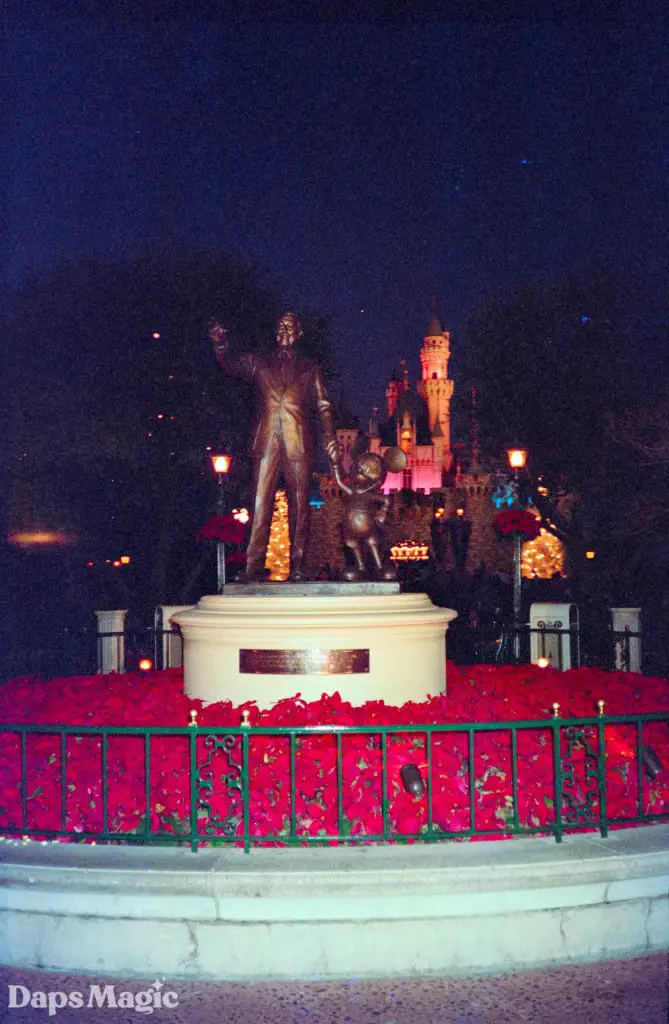
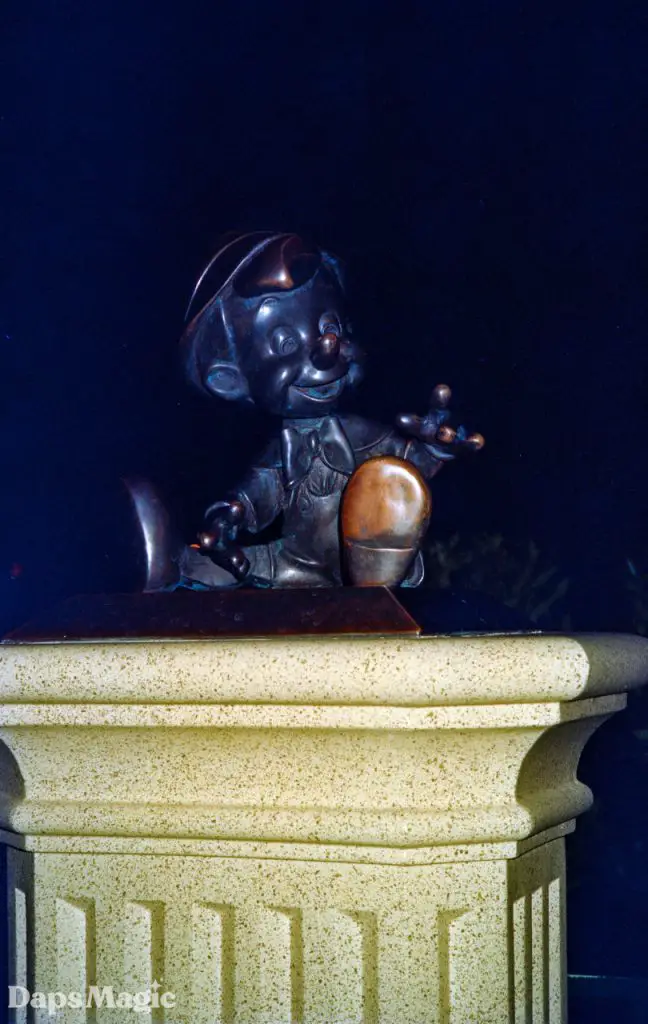
But what, you may ask, does all of this have to do with “The Globe of Death?”
It seems hard to believe, but when Disneyland opened in 1955, the center of the park, the focal point of all the “lands” that radiated outward from the central hub… was empty. There was a circular feature in place, but for some 30 years it was simply a flower bed, reflecting the seasons with a rotating array of plantings.
All this changed in the mid 1980s, as Disneyland planners tried to find ways to attract guests during the slow periods of early spring and fall. Some fanciful promotions were executed, including Circus Fantasy (1986-88), the Disneyland State Fair (1987 and 1988) and the 1950s inspired Blast to the Past (1988 and 1989). Each of these relatively short lived promotions saw changes to the park, including some interesting, if not to say startling additions to that quiet little flower bed. A ferris wheel lifted guests up over the center of Disneyland for State Fair. Guests could enjoy the sounds of the doo-wopping Dapper Dans and others in a juke box inspired stage when Blast to the Past took over the hub. And Circus Fantasy had as its memorable centerpiece the infamous “Globe of Death,” with motorcycle drivers inside speeding madly about.
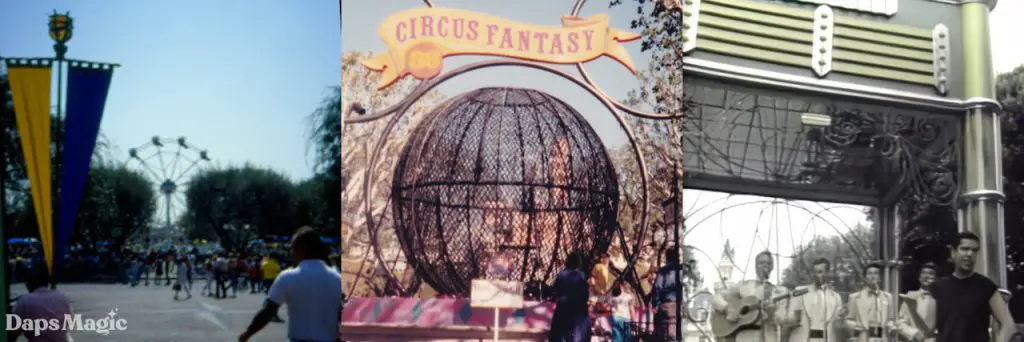
Whether or not these changes were bringing in the crowds, there was at least one set of regular visitors who were not amused. In the late 1980s many of Walt’s original “Imagineers” were still in place, and according to more than one source, they became determined to put an end to obtrusive ”enhancements” to the center of the park. The last one to appear was the massive “Dream Machine,” installed at great expense in the center of the park for the 35th anniversary celebration. Through 1990 this animated, musical, lighted installation dominated the center of the park.

With the blessings of Disney’s upper management, Blaine Gibson was commissioned to create the Partners statue. It was based, loosely, on an earlier image created by artist Charles Boyer. During a year of revisions, suggestions, and changes the statue that we enjoy today came into being, and was dedicated on November 18, 1993. Since that initial installation, copies of the partners statue have been placed at the Magic Kingdom in Walt Disney World (1995), Tokyo Disneyland (1998) and Walt Disney Studios Park in Paris (2002). One was also placed at the Disney Studios in Burbank (2001).
As stated above, starting from its 1955 opening, there had been an empty space in the center of Disneyland. There were some unusual efforts to fill that space, even if only on a temporary basis. But today, the Partners statue at the center of the park is truly the heart of the happiest place on earth.

